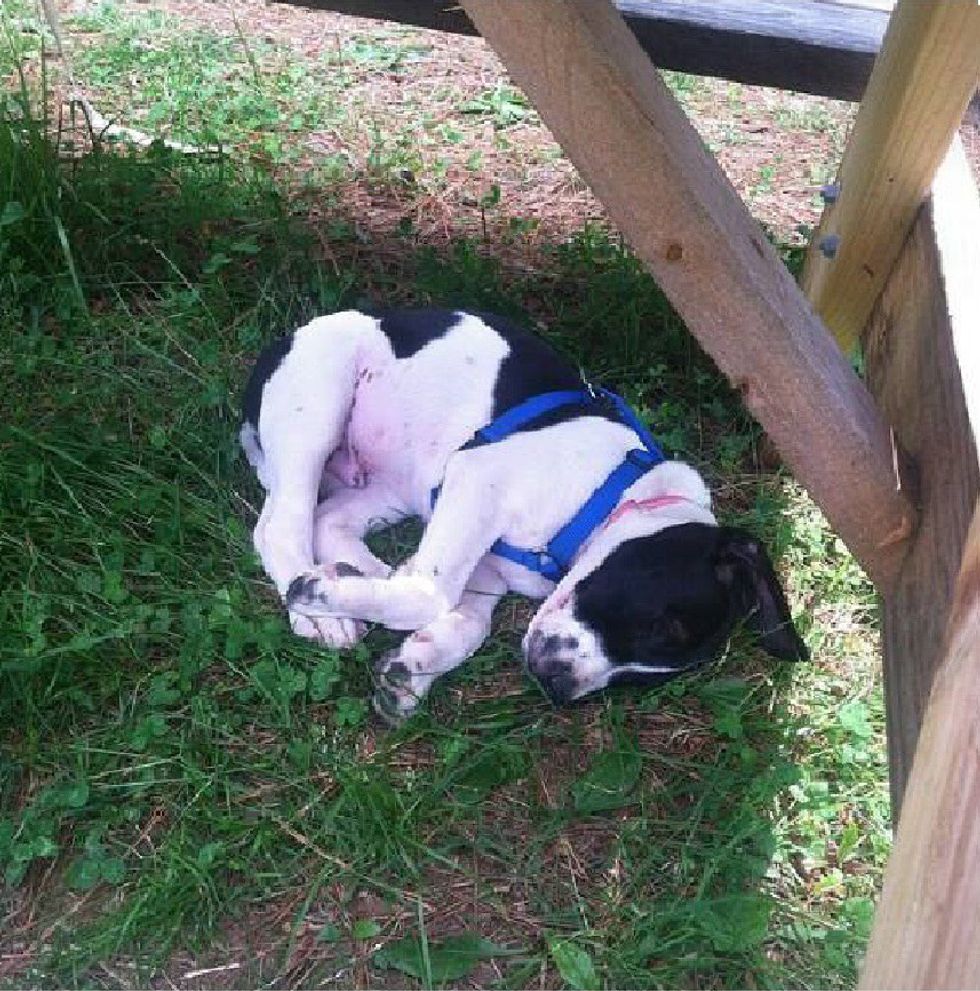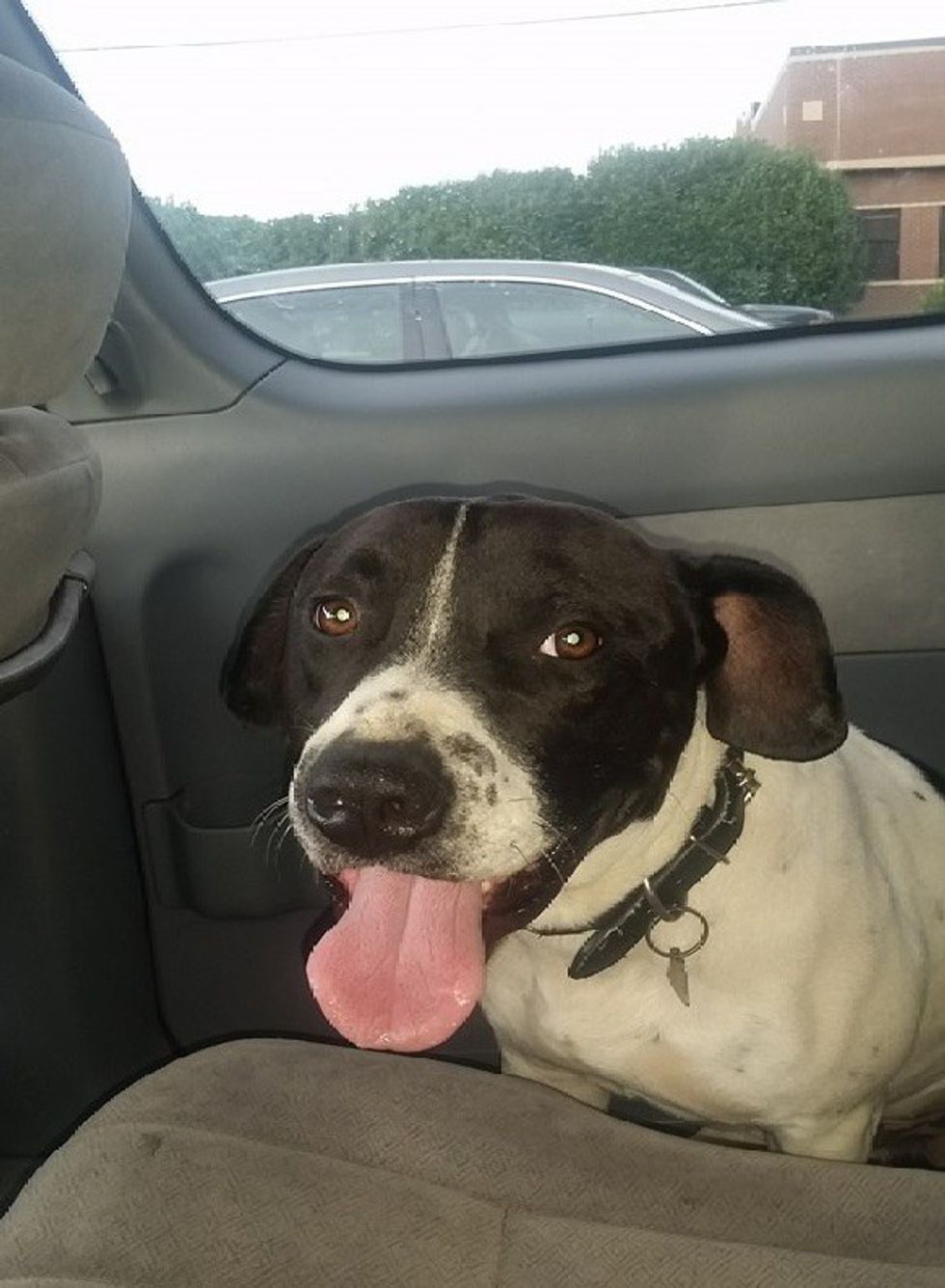“Yeah, my family has a Pitbull mix dog. He’s super friendly, though!” I have to say that at the end, because from the horrified looks that flashed across the faces of my fellow students the second the word ‘Pitbull’ came out of my mouth, you’d have thought we were practicing cannibals.
I can’t think of a dog breed better than Pitbulls. And since October, among other things, is National Pitbull Awareness Month, I think it is only fair to talk about how amazing Pitbulls are. I realize how lucky I am to have grown up around well trained, or at least, trained dogs, that I didn’t have to worry would bite me or attack me. But lucky isn’t the right word. Whether our dogs were tiny Beagles, fur shedding Labs, or Pits, they were trained not to nip, pee in the house, or beg for scraps from the table. That last one worked only so-so.
When I was a toddler my family’s Pitbull Luke saved my sister from a rattlesnake. My family is pro-Pitbull because we’ve seen first-hand how intelligent, responsible, and patient they are around children. When not actively guarding their human family, Pitbulls are huge, friendly babies and love sitting in laps, even though they are generally too big for that by the time they reach six months. They’ll flop over on their backs for belly scratches and cuddles, tails whipping back and forth like a windmill, tongues lolling out like an emoticon. Pits work well as therapy dogs, herding dogs, or family dogs because they are large, intelligent, muscular dogs with lots of stamina and energy. And they are darn cute puppies too.
Pitbulls got a reputation as these aggressive monsters when, in fact, Pitbulls are rated the 2nd highest by the American Temperament Test Society. When properly trained and socialized by responsible owners they grow from cute puppies to friendly dogs. It doesn’t happen magically, but then again, it doesn’t happen magically for any dog breed. All animals require work and upkeep in order for them to healthily interact in an urban environment.
And speaking of urban environments, according to www.banpitbulls.org there are over 937 US cities that have Breed Specific Legislation (BSL) on the books. That means Pitbulls are specifically targeted with extraneous legislation, restrictions, or even banned. For example, it is illegal to have a Pitbull on any military base in the US. There are high numbers of Pitbulls biting people, but there are also high numbers of improper identification and Pitbulls being used in dog fighting. Either one of those would skew statistics, and the second one is a direct cause for an inordinate amount of dog bites.
What do I mean by improper identification? Rottweilers, Patterdale Terriers, Alapaha Blue Blood Bulldog, Cane Corso, Catahoula, Dogo Argentino, Black Mouth Cur, American Bulldog, Boxer. Want to know what all of these dogs have in common? People, from laymen to former Pitbull owners like myself to licensed professionals, have mistaken them for Pitbulls. Try it for yourself with this quiz, http://www.pickthepit.com/. Dog fighting owners chain them up without proper diet, exercise, or socialization, and then terrorize and beat them into fighting. Naturally they aren’t the world’s most sociable pet after that experience, and they often lash out and bite or attack people because that is what they have been trained to do. And if they have been trained to do something, they can be trained not to do something too.
I asked a Pit owner about what drew her to the breed and she said, “I feel the same loyalty to the pit breed as some people feel to a football team or make of truck. Either you love ‘em or you’re wrong.” A bit extreme, but then that is the kind of devotion that a good Pitbull inspires. Get to know a good one and you’ll be hooked too.













































